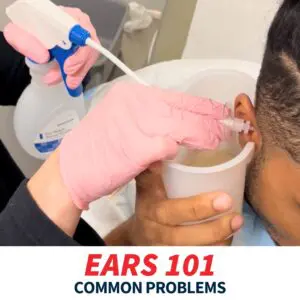Fractures and dislocations can happen suddenly—whether from a slip at home, a sports injury, or a fall on a slick surface. These are common injuries that affect people of all ages and are often treated at urgent care settings.
A fracture happens when a bone breaks, usually due to trauma, falls, or a direct hit. A dislocation occurs when a bone is forced out of its normal joint position—often in the shoulder, elbow, finger, or knee.
When these painful injuries occur, getting fast, expert care is important to avoid long-term problems. That’s where Midwest Express Clinic comes in.
With walk-in locations across Chicagoland and Indiana, we provide trusted urgent care for fractures and dislocations—without the long ER wait or high costs. Read on to learn more about these injuries and how we can help.
Understanding Fractures and Dislocations
Common Causes
Fractures and dislocations often result from:
- Slips or falls: Landing awkwardly can knock a joint out of place or cause a bone to break.
- Sports injuries: Contact sports like basketball or football can cause overextension or collision injuries.
- Trauma: Car accidents or hard impacts can lead to severe breaks or joint displacement.
- Overuse: Repeated stress on a joint can weaken it over time, increasing the risk of injury.
Common Symptoms
Visit your nearest Midwest Express Clinic if you experience:
- Swelling or bruising
- Sudden, sharp pain
- Trouble moving or putting weight on the injured limb
- Numbness near the joint
- Visible deformity or misalignment
These symptoms may indicate a bone fracture or joint injury that can worsen without medical attention.
Important: When deciding where to seek care, it is important to consider other injuries, such as head trauma, that may require additional medical attention.
Types of Fractures: What You Need to Know
When it comes to broken bones, not all fractures are the same. The type of bone fracture you experience can affect everything from the treatment you need to how long it takes to heal. Understanding the different types of fractures helps ensure you get the right medical care and can help prevent complications down the road.
- Stable Fracture: One of the less severe types, where the broken bone pieces remain aligned and the affected joint is not significantly displaced. These injuries are often treated with a non-surgical procedure, such as a splint or cast, to keep the bone stable while it heals. Most people with a stable fracture can expect a full recovery within a few weeks, provided they follow their doctor’s instructions.
- Transverse Fracture: It occurs when the break is straight across the bone, often resulting from a direct blow or trauma. These bone breaks can be either closed fractures, where the skin remains intact, or open fractures, where the broken bone pierces the skin. Open fractures are more serious, as they increase the risk of infection and require immediate medical attention.
- Oblique Fracture: Characterized by a diagonal break across the bone. This type of fracture can be more unstable and may require additional support, sometimes involving internal fixation with metal plates or screws to ensure the bone heals correctly.
- Comminuted Fracture: When the bone shatters into three or more pieces, often due to high-impact trauma such as a car accident. These complex fractures usually need surgery, where orthopaedic surgeons use metal plates, screws, or rods to stabilize the bone and promote healing.
- Open Fracture: Also called compound fractures, are particularly serious because the broken bone breaks through the skin, exposing the injury to bacteria and increasing the risk of infection. Immediate treatment is crucial, often involving surgery to clean the wound and stabilize the bone.
- Stress Fracture: Tiny cracks in the bone that develop over time due to repetitive force or overuse, common in athletes and those involved in high-impact or contact sports. While less dramatic than other fractures, stress fractures still require proper diagnosis and care—usually rest, protective gear, and sometimes physical therapy—to prevent the injury from getting worse.
X-ray imaging and orthopedic evaluation are essential to correctly identify these fracture types and the right treatment—from immobilization with a cast to surgery in more complex cases. Most people recover in a few weeks to several months, depending on the injury.
To reduce pain and swelling, your care team may recommend ice, elevation, and medication. Following your doctor’s advice is essential for healing correctly and avoiding complications. Most people can expect to return to normal activities within a few weeks to several months, depending on the injury.
How to Help Prevent Bone and Joint Injuries
While not all accidents can be avoided, you can reduce your risk with a few simple steps:
- Keep your home safe: Remove tripping hazards, install handrails, and ensure good lighting.
- Stay active: Regular exercise builds strength, balance, and joint support.
- Wear safety gear: Use helmets, braces, and pads during sports or risky activities.
- Choose proper footwear: Supportive, nonslip shoes help prevent falls.
- Get screened: Bone density and joint evaluations can detect early issues.
Taking these proactive steps can help lower your risk of injury, especially in high-impact activities or aging populations.
Why Choose Midwest Express Clinic for Immediate Injury Care
At Midwest Express Clinic, we make it easy to get high-quality care for fractures and dislocations—no appointment necessary. With over 50 walk-in locations across Chicagoland and Indiana, our experienced providers deliver fast, effective treatment without the long ER wait or high costs.
We offer:
- On-site digital x-rays for quick, accurate diagnosis
- Splints, braces, or immobilization to support healing
- Pain relief and anti-inflammatory care
- Referrals to orthopedic specialists if advanced treatment is needed
With extended evening and weekend hours, we’re here when you need us most—whether it’s after a game, during a busy weekday, or on a weekend.
Important: Head to the ER or call 911 if you experience:
- A bone breaking through the skin
- Heavy, uncontrolled bleeding
- Loss of consciousness or severe trauma
For non-life-threatening injuries, trust Midwest Express Clinic for convenient, affordable care that gets you back on your feet
Find your nearest clinic at midwestexpressclinic.com/locations.




